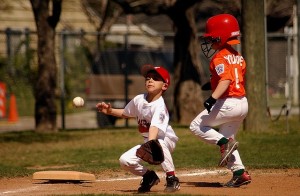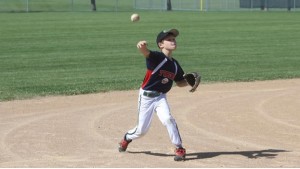How to Keep Kids Safe in Little League
Nothing says summertime like baseball. And across the nation, kids have a ball playing on their little league teams. Sadly, some of them will end up injured.
When we think of dangerous sports, baseball generally doesn’t rank high on the list. However, the tragic case of little Nader Parman II demonstrates that even a relatively tame sport can turn deadly. While cases such as Parman’s are considered freak accidents and are blessedly rare, failing to take proper safety protections can lead to serious injury. To keep your littles safe on the diamond, adopt the following safety measures:
1. Learn CPR and First Aid, and Be Sure All Coaches and Assistants Are Trained in It
Most adults who work with children, from school professionals down to summer playground leaders, are required to be trained in CPR and basic first aid — but don’t take that for granted. Inquire as to whether your child’s baseball or softball coach is certified. It’s a good idea if volunteer assistant coaches and other adult participants get certified as well.
As a parent, it’s always a good idea to get certified in first aid and CPR yourself. You will hopefully never need the skills, but it helps to know you’re prepared should an emergency occur.
2. Warm up and Cool Down Properly
Just like adult exercisers, children need to warm up and cool down properly before engaging in physical exertion. Contrary to popular opinion, warming up doesn’t necessarily involve heavy stretching. Rather, focus the warm-up on mobility exercises and exercises made to increase heart rate gradually.
The best time to stretch is during the cool down. Think of your child’s muscles as a rubber band: If it’s warm, it stretches easily, but if you put it in the freezer and try to stretch it cold, it will snap.
3. Follow Rest Requirement Guidelines
Just like adults, children who play sports can suffer overuse injuries. In baseball and softball, these usually take the form of shoulder injuries caused by throwing the ball too often. The Medical Safety and Advisory Committee of USA Baseball drafted guidelines for pitching limits. While pitchers are usually the ones who suffer injuries to the rotator cuff and shoulder, players who play any position can suffer overuse injuries as well.
In addition to following the USA baseball guidelines, teach your children to listen to their bodies when they feel tired.
4. Make Sure You Have Protective Equipment
It is vital to have the correct safety equipment. This holds true not only for the players on the field, but also for spectators as well. Make sure your field is equipped with proper safety fencing and netting to avoid spectator injury in the form of foul balls or hastily flung bats.
Batting helmets remain a must for all players batting or running the bases. The catcher should always wear a helmet, too, as well as face protection. Cleats should be made of plastic, not metal, to avoid injury when a player slides into base. Male baseball players should always wear a proper athletic supporter or cup to avoid injury to the groin area. In addition, shin guards, mouth guards, sliding pants and batting gloves can further protect young players from cuts, scrapes and impact injuries.
5. Keep an Eye on the Sky: Be Aware of Weather
In many parts of the nation, summertime is the ideal time to get outside. However, this doesn’t mean ignoring dangerous weather. Summer storms can spring up suddenly, and players should find shelter immediately should a thunderstorm break out to avoid the risk of lightning strikes.
In addition, on hot, sunny days, heat exhaustion, heat cramps and heat stroke can play a factor. Make sure players have access to a shady area to get out of the sun, and make sure plenty of cool water or electrolyte beverages are on hand to stave off dehydration, a key cause of heat cramps. Learn the signs of heat exhaustion, and take immediate action to avoid the situation turning into potentially deadly heat stroke — and always make sure an adult with a charged phone is present to call 911 if necessary.
6. Every Parent’s Nightmare: Know the Signs of Abuse
Though it’s difficult to even think about, not all adults who work with children do so out of goodness. Abuse, sadly, can and does occur. For this reason, parents and other adults must adhere to mandatory reporting guidelines for reporting suspected sexual abuse, physical abuse or neglect. Some jurisdictions require reporting within 24 hours of suspected abuse, but common sense dictates not waiting.
If you are a parent, learn the techniques that sexual predators use to prey on innocent children and adults alike. Techniques such as forced teaming, too many details, unsolicited promises and refusal to hear the word “no” are but a few of these techniques. A great resource is Gavin de Becker’s book “Protecting the Gift,” which teaches parents to help keep their children from becoming victims.
Sports should be fun, not scary or harmful. And while some injuries are unavoidable, with proper planning and forethought, you can minimize the risks of injury while helping your child or children enjoy the best summer of their lives out on the ball field.















